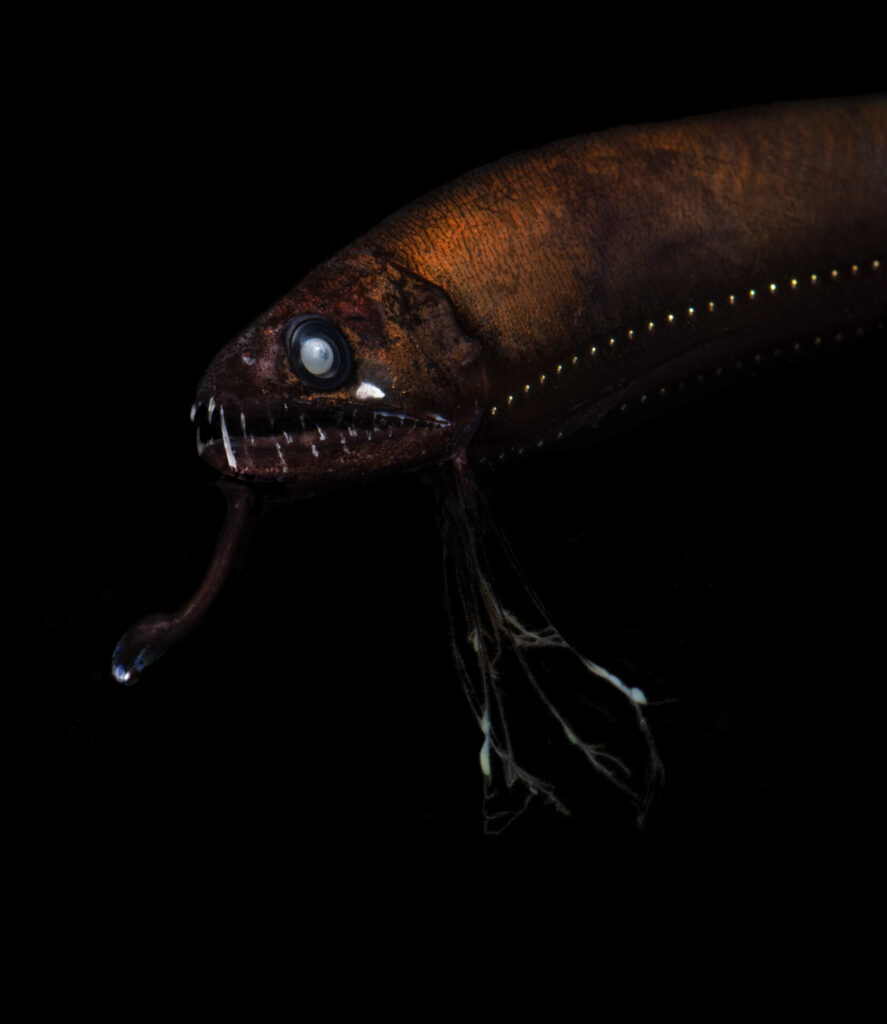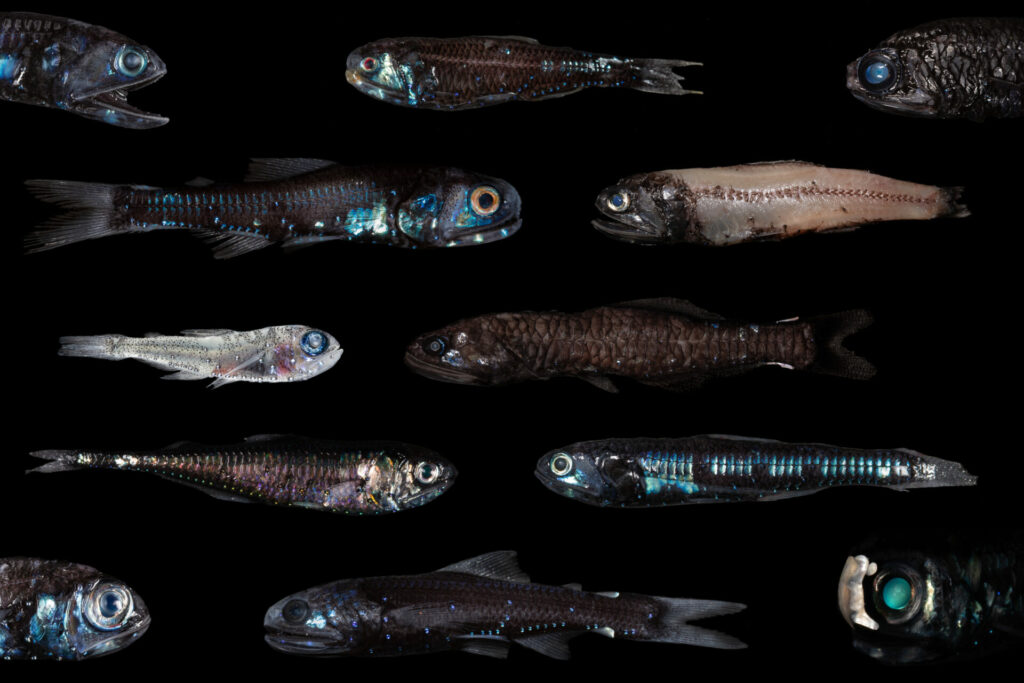Two out of every three breaths we take come from the ocean, making this remarkable expanse of water not only vital to the natural world’s survival, but humans as well.
Despite covering a staggering 70 per cent of our planet, little more than eight per cent of our high seas are actually protected through marine protected areas (MPAs).
Alarmingly, it’s facing more threats now than at any time in history owing to a perfect storm of pollution, overfishing, land reclamation, deep-sea mining and human-caused climate change.
According to the a recent study, temperatures in our oceans reached record-breaking highs this May. Meanwhile, researchers at Scotland’s University of Glasgow have uncovered the strongest evidence to date that fish are migrating in their millions to our planet’s poles to escape global warming.
Home to more fish than the rest of the ocean’s layers combined, the twilight zone’s mind-blowing biodiversity includes otherworldly fist-size glass squid, fang-toothed viperfish and cave-living critters older than dinosaurs
Ocean conservation tends to focus on what we can see in shallow coral reef systems and what we can’t see on the seabed where 007-style deep-sea submersibles venture to ‘Earth’s Final Frontier.’
But what of our ocean’s mysterious middle? Understudied, yet teeming with life, this massive mid-water world could be wading into troubled waters without most of us even realising…
The Real Twilight Zone
Not to be confused with the 1960s American sci-fi TV series, the ocean’s real-life ‘Twilight Zone’ refers to the global-spanning layer sandwiched between the upper reef’s sunlit waters and seafloors’ hidden depths.
Also called the Mesopelagic zone, its ‘one of the largest habitats on earth,’ oceanographer Heidi Sosik tells The Ethicalist,’but it’s very challenging to study because it’s so vast, deep and dark.’
With only one per cent of filtered sunlight reaching here – a virtual dark expanse to human eyes – plants don’t survive, but animals do in their trillions.
Home to more fish than the rest of the ocean’s layers combined, the twilight zone’s mind-blowing biodiversity includes otherworldly fist-size glass squid, fang-toothed viperfish and cave-living critters older than dinosaurs, alongside more familiar ‘visitors’ such as tuna and marine megafauna like blue whales.

This mesopelagic layer may be hidden 660 to 3,300 feet under, but its barely-lit waters and abundant aquatic life aren’t immune to the pressures faced by the rest of the ocean.
A ground-breaking study published by Nature this April has revealed that as much as 40 per cent of life in the twilight zone could vanish by the end of this century.
Such a scenario would spell disaster for our oceans’ health and planet at large.‘We studied the fossil record of twilight zone organisms over millions of years and discovered a new fact, namely that life in the twilight zone habitat is very climate sensitive,’ lead researcher Professor Paul Pearson of Cardiff University’s School of Earth and Ocean Sciences tells the Ethicalist.
Underwater Migration


Like an invisible life-support system, the twilight zone is the glue holding the ocean’s complex food chain together. ‘Salps [jelly-like jet-propelling creatures living in the twilight zone] are important in marine food webs because they vacuum up and eat huge quantities of [carbon-dioxide-consuming] plankton and small particles,’ Sosik explains.
Every night this vast mid-water world plays host to one of earth’s largest, and largely invisible, migrations. Trillions of marine organisms, from transparent crustaceans to jellyfish, swim up to the water’s surface to forage on phytoplankton – microscopic, free-floating plant-like organisms).
Known as a carbon pump, this unique ecosystem service is crucial in regulating the global climate by removing planet-warming carbon from the atmosphere
Their journey up to the sunlit layer – which reaches 200 meters down from the ocean’s surface – provides all other kinds of other life with food, while their return to the twilight zone at dawn carries carbon into deeper waters.
One way they do this is by pooping out ‘marine snow’! Not the stuff of make believe, rather this is a very real mix of natural debris like plant fragments and phytoplankton which eventually settles on the ocean floor where it’s safelysequestered, sometimes for centuries.
Carbon Pump
Known as a carbon pump, this unique ecosystem service is crucial in regulating the global climate by removing planet-warming carbon from the atmosphere. Non-profit Woods Hole Oceanographic Institution(WHOI) believe biological processes in the twilight zone mitigate a whopping 2-6 billion metric tons of carbon annually.
But this dimly-lit oceanic layer’s ability to curtail climate change could be undone if climate change continues on its current trajectory. ‘Our research suggests that reduced food supply and deoxygenation associated with a warming water column are major threats,’ Pearson tells The Ethicalist.
Bacteria degrade organic material much faster in warmer waters, meaning the mesopelagic animals’ food may disappear before they even get a chance to eat it, slowing the twilight zone’s ability to capture carbon. ‘Out of control global warming will devastate the twilight zone habitat which will not recover for tens or hundreds of thousands of years,’ Pearson prophesizes.
Deep(er) Sea Fishing

Commercial fishing also threatens the twilight zone’s carbon sponge capabilities. ‘We know overfishing of nearer-surface species is already happening, so to feed future populations the mesopelagic fish stock may become very important,’ lead author of the Nature-published study Dr Katherine Crichton tells The Ethicalist.
While many of the fish living in the twilight zone are inedible for humans, they’re an untapped source of marine feedstuffs for the global $290 billion aquaculture and $150 billion dollar nutraceutical (dietary supplements) industries.
Already being eyed for exploitation are its 300 different species of lanternfish. One of Earth’s most abundant vertebrates, they lurk in the mesopelagic layer’s inky waters.

Harvesting them en masse would be like taking a wrecking ball to the middle of the ocean’s food chain. Concerningly, few regulations exist for fishing in the twilight zone because it’s located largely in international waters, so owned by no nation.
Eager to exploit this vulnerability is Norway, who issued 46 exploratory fishing licences for the Twilight Zone back in 2018. Part of the UN Ocean Decade for Sustainable Development, JETZON (Joint Exploration of the Twilight ZoneOcean Network) could be the lifeline that the middle ocean’s precious and unprotected fish populations need. Launched in 2020, its aim is to coordinate an international effort dedicated to researching, managing and conserving the Twilight Zone specifically.
Light At End Of The Twilight Zone?
‘My biggest concern at present is that we understand so little about the myriad links that comprise the Twilight Zone ecosystem,’ research scientist and JETZON programme leader Dr Adrian Martin tells The Ethicalist.
A reality not helped by its marine life’s sensitivity to light and sound, scores of twilight zone species are unknown to science, with some identified only in the last few decades, like the hairy-armed yeti crab.
Working to right this wrong is Sosik, a lead scientist for Woods Hole Oceanographic Institution’s Ocean Twilight Zone Project. ‘New technologies are making a huge difference in how much scientists can observe about the ocean twilight zone,’ Sosik says. ‘We’re using new video imaging systems, new acoustic sensing systems and new robots.’ Longer term, this fieldwork could even help build a sort of acoustic library of the twilight zone’s mysterious critters.
Martin argues that ‘in addition to extraordinary bits of equipment pushing the limits of what we can do, we need more and cheaper facilities for doing more established things to allow broader involvement globally.’
By no means a lost cause, Pearson points out that ‘we can safeguard the future of twilight zone biodiversity by restricting future temperature rise,’ but cautions that ‘rapid reduction in greenhouse gas emissions over the next decades is vital to achieve this.’













